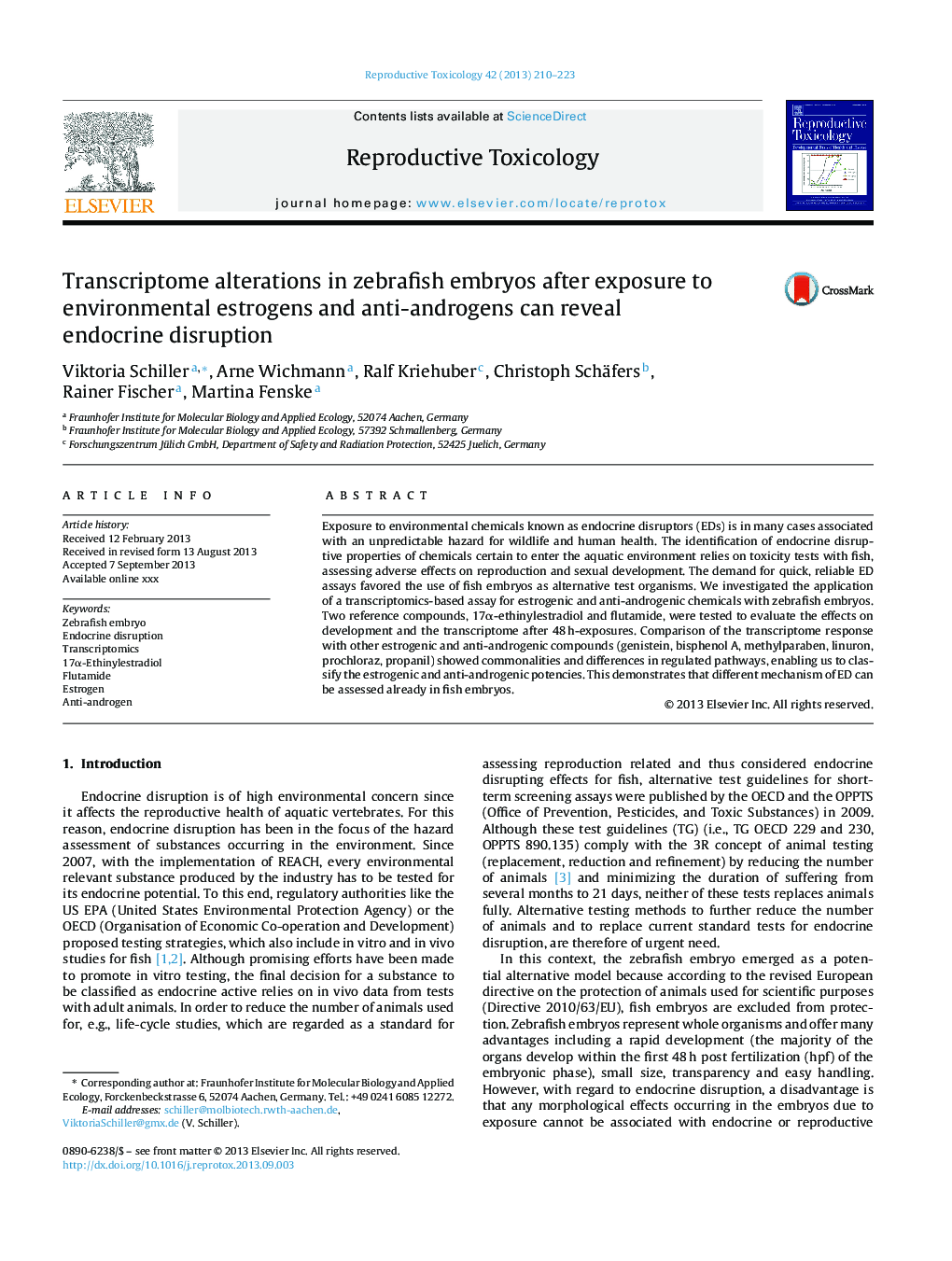| Article ID | Journal | Published Year | Pages | File Type |
|---|---|---|---|---|
| 5858608 | Reproductive Toxicology | 2013 | 14 Pages |
Abstract
Exposure to environmental chemicals known as endocrine disruptors (EDs) is in many cases associated with an unpredictable hazard for wildlife and human health. The identification of endocrine disruptive properties of chemicals certain to enter the aquatic environment relies on toxicity tests with fish, assessing adverse effects on reproduction and sexual development. The demand for quick, reliable ED assays favored the use of fish embryos as alternative test organisms. We investigated the application of a transcriptomics-based assay for estrogenic and anti-androgenic chemicals with zebrafish embryos. Two reference compounds, 17α-ethinylestradiol and flutamide, were tested to evaluate the effects on development and the transcriptome after 48 h-exposures. Comparison of the transcriptome response with other estrogenic and anti-androgenic compounds (genistein, bisphenol A, methylparaben, linuron, prochloraz, propanil) showed commonalities and differences in regulated pathways, enabling us to classify the estrogenic and anti-androgenic potencies. This demonstrates that different mechanism of ED can be assessed already in fish embryos.
Keywords
Related Topics
Life Sciences
Environmental Science
Health, Toxicology and Mutagenesis
Authors
Viktoria Schiller, Arne Wichmann, Ralf Kriehuber, Christoph Schäfers, Rainer Fischer, Martina Fenske,
